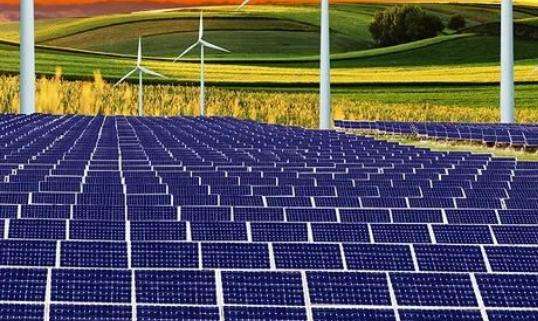Since entering the second half of 2008, China's economic development has slowed down due to the impact of the international macroeconomic situation. In order to effectively stimulate domestic demand and maintain stable and rapid economic and social development, the government has increased investment in fixed assets in the fields of transportation and energy, and supports and encourages the development of renewable energy. As a new energy source that is energy-saving and environmentally friendly, the wind power industry has won historic development opportunities. In order to comprehensively promote economic and social development, some areas that still have shortcomings and residents without electricity have accelerated the development of small wind power, increased investment in solving the problem of power supply for people in remote areas, and strongly promoted the further promotion of small wind power.
The development prospects of China's wind power and other new energy power generation industries are very broad, and it is expected to maintain rapid development for a long time to come. With the localization of China's wind power equipment and the maturation of new technologies such as wind and solar hybrid systems, the cost of small wind power generation is expected to drop further, and the economic and social benefits will increase. The market potential of small wind power generation is huge. Small wind turbine related equipment manufacturing, small wind power technology research and development, wind circuit lights and other fields have become investment hot spots, and the market prospects are promising.
I have never been engaged in it, but I heard that my cousin is in charge of sales at Guangzhou Lvxin Wind Turbine Factory, which is pretty good! They also sell products for export, but the prices are relatively low. The profits are not as high as domestic ones, but the volume is pretty good.
Despite the economic downturn in the United States in 2009, its cumulative installed capacity of small wind turbines hit a milestone of 100MW. In this year, the US small wind turbine market added 20.3MW of installed capacity and sales of 82.4 million. USD, achieving a 15% growth. This is equivalent to the addition of 10,000 new generators, bringing the total installed capacity of small wind turbines in the United States to 100MW.
Turbine manufacturers attributed the growth to improved and new stimulus packages from the federal government and states, optimism from private equity investors and sustained demand from customers.
The American Recovery and Reinvestment Act of 2009 expanded the scope of the federal investment tax credit for small wind turbines, allowing customers to deduct 30% of the total cost of small wind turbine systems as a tax credit. In 2009, when the economic recession was at its peak, there was still US$80 million in private capital invested in small wind turbine manufacturing companies, thus attracting a lot of external capital. In the past five years, at least US$252.7 million in external capital has been invested in 20 manufacturers. (Most of which are located in the United States). This investment has provided many companies with funds to expand production, reduce costs, meet market demand, and even acquire competitors.
Some other important statistics
95% of the total sales of small wind turbine systems in the United States last year were produced by American manufacturers;
2/3 of the world's last year of small wind turbine systems are made by U.S. manufacturers;
About 250 companies worldwide produce or plan to produce small wind turbines
95 of them, or more than one-third Located in the United States;
Since 1980, approximately 100,000 compactWind turbine.
Survey data and analysis
According to a survey of global wind turbine manufacturers conducted by the American Wind Energy Association, the reason why the U.S. market continued to grow in 2009 was mainly due to the following reasons: U.S. federal investment Improved tax credits, continued customer demand, outside private equity investments in manufacturing, and the ability of manufacturers to identify and leverage specific market niches.
The growth of the U.S. small wind turbine market
Among them, the investment tax credit policy may be the most important factor in the growth of the small wind turbine market last year. The policy opens up historically unreachable markets, sends a strong signal to investors about the technology's promise, and helps consumers purchase small wind systems during recessions when other financing mechanisms are difficult to access.
The creation of the Investment Tax Credit, a top priority for the industry, allows industry members and advocates to shift their political efforts to other salient issues such as wind turbine approvals, grid metering and Standardized integration rules, allocation and allocation of federal R&D funds. In addition, manufacturers are focusing more on improving the performance of wind turbines, ensuring that their equipment meets newly created safety performance standards, reducing costs, strengthening distribution networks, identifying new market niches, and expanding production.
Global sales of off-grid and grid-connected wind turbines in 2009
Last year, the number of new installed capacity in the United States increased by 15%, but the wind power sold The number of units fell by 6%. This trend indicates that the market will continue to move towards larger grid-connected wind turbine systems. Since 2007, the residential and commercial/light industrial sectors have emerged and dominated, and sales of off-grid fans have remained stable.
Manufacturers report that although consumer interest in small wind turbines has increased during the recession, they are still reluctant to make the investment until financing becomes more feasible and affordable. purchasing decisions. As a result, many manufacturers are expecting sales to surge as the economy recovers.
Growth of the U.S. small wind turbine market
Factors promoting consumer demand:
Although the economy and environment are still the main factors for consumers However, the growth of consumer demand is also stimulated by the following factors:
Economic factors:
The investment payback period, or internal rate of return;
Financial measures to avoid increases in traditional electricity prices;














